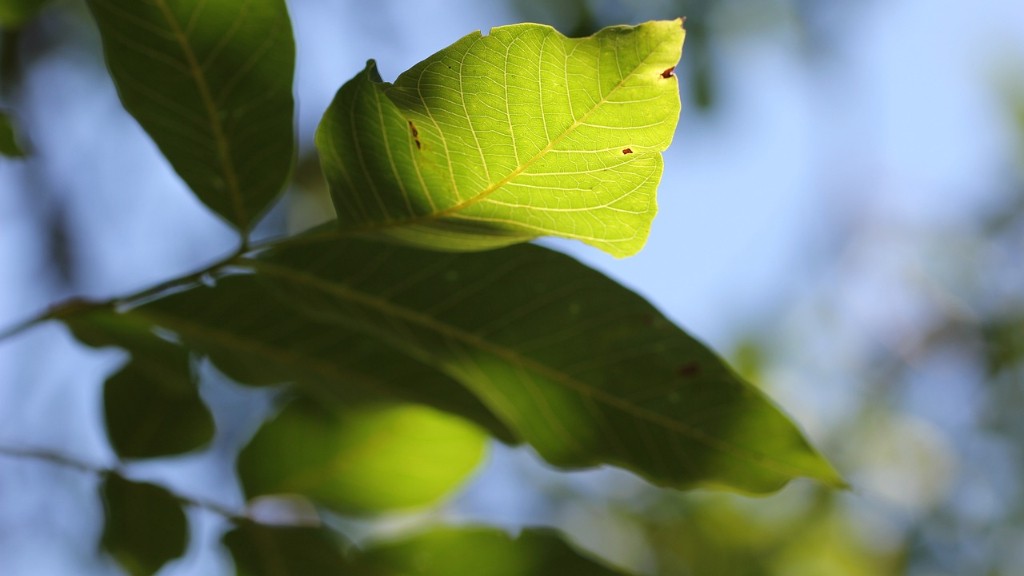When to plant a lemon tree is largely dependent on the region and climate. Generally, it is best to plant a lemon tree in spring or early summer in most areas. If you live in a warmer climate, you may be able to plant a lemon tree earlier in the year. Conversely, if you live in a colder climate, you may need to wait until the end of spring or later in summer. If your area has colder winters, be sure to wait until the winter is over before planting a lemon tree.
Before planting, it is important to select the right variety of lemon tree for your climate. Lemon trees grow best in warm climates with long summers and relatively short winters. If you have a cold or wet climate, there are many dwarf varieties of lemon trees better suited for those conditions. Make sure that you select the right variety for your climate and use appropriate trees for your area.
Once you have selected the right variety, you should prepare the soil for the lemon tree. Lemon trees prefer soil that is light and well-draining. A combination of sandy loam and organic matter, such as compost or peat, is ideal. The soil should be slightly acidic, with a pH between 5.5 and 6.5. If you are planting a lemon tree in a pot, ensure that the pot is large enough to accommodate the roots and that it contains a drainage hole.
When planting the lemon tree, dig a hole twice as wide and twice as deep as the root ball of the tree. Add some compost or aged manure to the soil before planting and mix it in. Place the lemon tree in the hole, making sure the root ball is level with the surrounding soil. Once it’s in the ground, pat down around the base to ensure there are no air pockets. Water the tree immediately after planting, making sure to saturate the soil around the roots.
Taking care of a lemon tree is relatively straightforward. Your lemon tree will need plenty of sunlight – it should be planted in an area that gets at least 6-8 hours of sunlight daily. Keep the soil lightly moist but do not overwater. Provide extra nutrition in the form of fertilizer or compost tea to help the tree produce the best results. Prune the tree regularly to keep it healthy and shapely.
How to Plant a Lemon Tree
To plant a lemon tree, one must first select the right variety of lemon tree for the climate. The other important consideration is the soil. Lemon trees prefer light, well-draining soil, which should be slightly acidic. The tree should then be planted, ensuring that the root ball is level with the soil. The tree should then be immediately watered and kept in an area with plenty of sunlight.
Maintaining a Lemon Tree
In order to ensure that a lemon tree grows to its full potential and produces good-quality fruit, regular maintenance is key. Keeping the soil lightly moist is important, and extra nutrition in the form of fertilizer or compost tea should be provided. Pruning should also be done regularly to keep the tree healthy and shapely.
Common Challenges When Planting a Lemon Tree
When growing a lemon tree, some of the most common challenges faced by gardeners include selecting the right variety for their climate, and maintaining the right soil conditions. Lemon trees prefer light, well-draining soil, which should be slightly acidic. Gardeners may also encounter other issues such as weeds, pests, and diseases. If any of these issues arise, they should be taken care of immediately.
Pests and Diseases of Lemon Trees
One of the most common pests associated with lemon trees is the citrus leafminer. These small, larval caterpillars feed on the leaves of the tree, eventually causing leaves to yellow and dry. Other pests that affect lemon trees include aphids, mealybugs, and scale. Diseases that affect lemon trees include citrus canker and citrus greening. If these pest and disease issues arise, gardeners should take the appropriate measures to address them.
Harvesting and Storing Lemons
The optimal time to harvest lemons from a tree depends on where you live. Generally, lemons should be harvested when they are fully ripe and still slightly firm. Lemons can be stored either on the tree or off the tree, but they should be protected from fluctuating temperatures and direct sunlight. If lemons are to be stored off the tree, they should be placed in a ventilated container and kept in a cool, dry place. Lemons can keep for up to three weeks when stored in this way.


